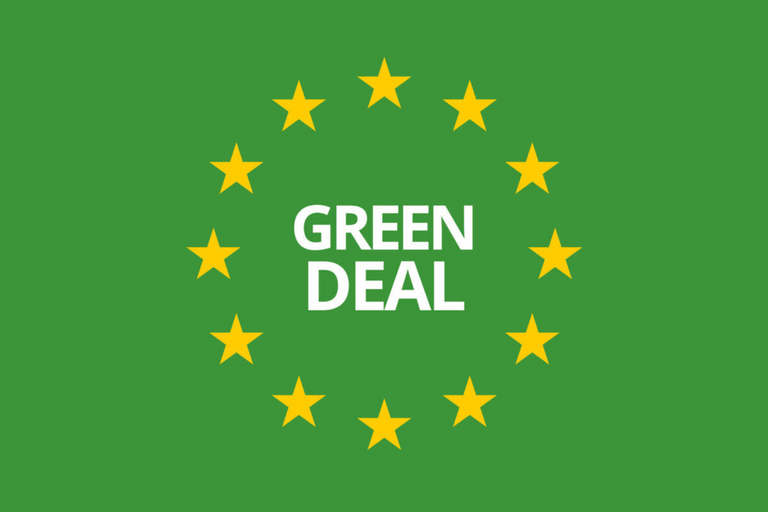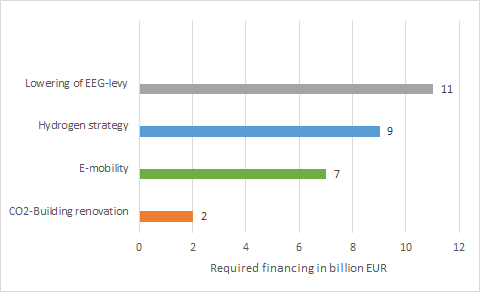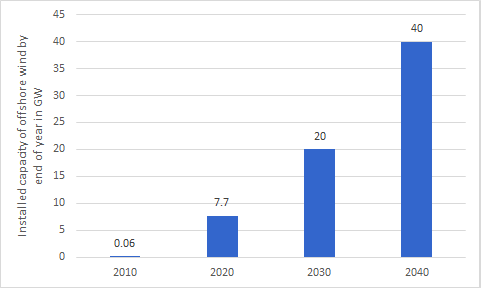German COVID stimulus - how green is it ?
German COVID stimulus - how green is it ?(energypost)

- Earlier this month, Germany announced a E130bn COVID related economic stimulation package – part of this is directly allocated to energy transition. Note this is separate from the EU E750bn stimulation package that is currently being discussed by EU members.
- This analysis breaks down the energy transition spending element, which totals some E30bn, or just under 25% of the total stimulation package
- The biggest element is a cut in the renewables surcharge, this will take c. E11bn of the budget. The other big spend is on hydrogen, at E9bn. Between them these two items make up 2/3 of the budget.
- Smaller amounts go to e-mobility (tax exemptions, subsidies, co-financing of charging stations and battery cell R&D), which gets E7bn and energy efficient building refurbishment, which gets E2bn.

- Targets have also been raised for offshore wind and solar – with the controversial PV cap being removed. These technologies will require no funding as they are expected to be bid with no subsidy.
Analysis and Comments
- The split of spending is interesting as an indication of where the German government sees its immediate priorities. Clearly number one is providing a cost relief to electricity consumers, then funding for a new green (via blue) hydrogen industry and then EV’s (including battery technology & EV charging) & finally energy efficient buildings.
- The capping of the renewables surcharge (the EGG levy) at 6.5 ct/kWh in 2021 and 6.0 ct/kWh in 2022 is intended to provide financial relief to electricity consumers. To give context the EEG levy for 2020 is currently 6.756 ct/kW & it was previously expected to increase to c. 8 ct/kW next year.
- To this point there are indications that the German focus will probably shift away from pushing toward green hydrogen quickly, instead emphasizing blue hydrogen (made from natural gas)as a transition step.
- The targets for offshore wind have been raised to 20GW by 2030 and 40GW by 2040. To give this context it is estimated that under 8GW will be installed in 2020. Offshore wind is seen as one of the big growth drivers in renewable generation growth


➡️ Publish0x
➡️ UpTrennd
➡️ Minds
➡️ Hive
➡️ Twitter
➡️ Facebook
➡️ Be paid daily to browse with Brave Internet Browser
➡️ A secure and easy wallet to use: Atomic Wallet
Proud member of:


Helps us by delegating to @hodlcommunity

Make a good APR Curation by following our HIVE trail here


0
0
0.000
Regardless of how much we like free money in different forms like helping us in reducing our electrical bills, some extra cash for everyone etc, all these money mainly come from our income tax as well as other taxes. What is given may often be taken back in other ways especially the middle class and above may experience more taxes. Just my one-cent opinion.
!tip
What is given by the state has to be taken by another mean or from someone else and as you mentioned the middle class is often the one not benefiting...
Let’s see what happens 😉
Thanks for the tip mate
🎁 Hi @vlemon! You have received 0.1 HIVE tip from @dolphin-assemble!
Sending tips with @tipU - how to guide.